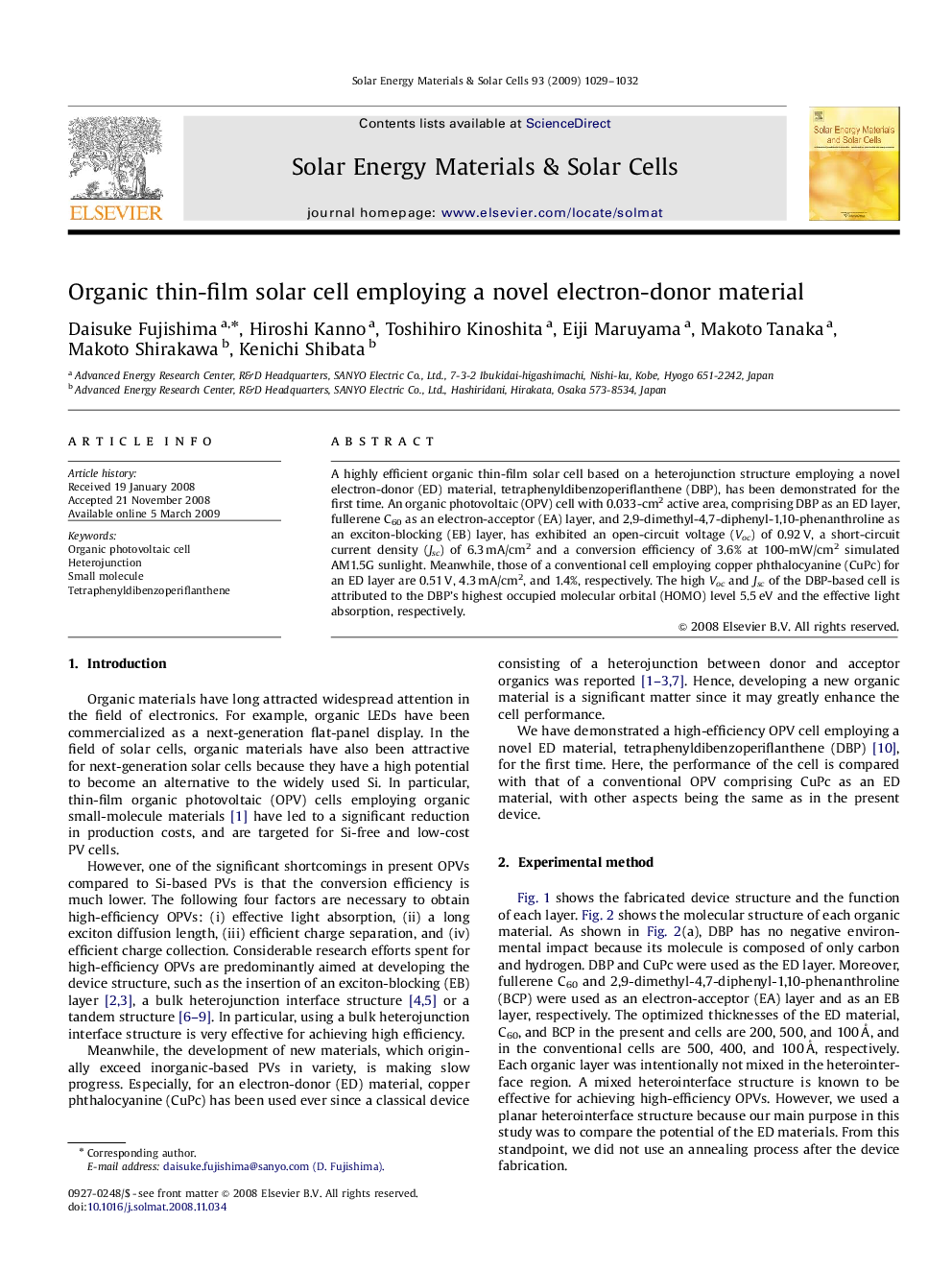| Article ID | Journal | Published Year | Pages | File Type |
|---|---|---|---|---|
| 80008 | Solar Energy Materials and Solar Cells | 2009 | 4 Pages |
A highly efficient organic thin-film solar cell based on a heterojunction structure employing a novel electron-donor (ED) material, tetraphenyldibenzoperiflanthene (DBP), has been demonstrated for the first time. An organic photovoltaic (OPV) cell with 0.033-cm2 active area, comprising DBP as an ED layer, fullerene C60 as an electron-acceptor (EA) layer, and 2,9-dimethyl-4,7-diphenyl-1,10-phenanthroline as an exciton-blocking (EB) layer, has exhibited an open-circuit voltage (Voc) of 0.92 V, a short-circuit current density (Jsc) of 6.3 mA/cm2 and a conversion efficiency of 3.6% at 100-mW/cm2 simulated AM1.5G sunlight. Meanwhile, those of a conventional cell employing copper phthalocyanine (CuPc) for an ED layer are 0.51 V, 4.3 mA/cm2, and 1.4%, respectively. The high Voc and Jsc of the DBP-based cell is attributed to the DBP's highest occupied molecular orbital (HOMO) level 5.5 eV and the effective light absorption, respectively.
